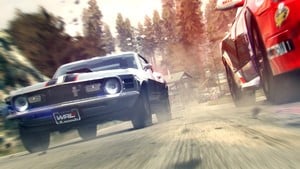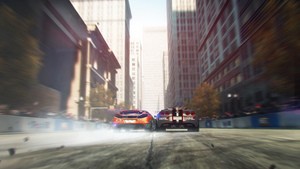
Ask any racing fan what their favourite gaming experience has been over the past five years, and there’s a good chance that Codemasters’ Race Driver: GRID will rank at the sharp end of their list. Since its release in 2008, GRID has developed something of a cult following, thanks in part to its strong racing heart and fine damage modelling.
Four years later, attention is firmly fixed on the racer’s long awaited sequel, GRID 2. We were lucky enough to put a pre-alpha build of the title through its paces, tackling the dangerous coasts of California and inner-city thrills of Chicago – but does the follow-up live up to its predecessor's impressive reputation?
Despite a troubled announcement period, culminating in a slew of negative press regarding the game's lack of in-car cockpit view, there is already a lot to like about GRID 2. What’s immediately obvious is that the past four years of developing top racing games has given Codemasters a solid grasp on graphical technology. Building on the beautiful aesthetics of DiRT 3, GRID 2 looks absolutely stunning in motion, detailing both idyllic landscape shots and urban streets to a boggling level of detail.
The game also boasts some visually impressive car models, challenging Gran Turismo with their authenticity. The lighting effects are especially impressive, and it's something that stands out as we rush through the forests of California’s coastline.

Much like the original release, GRID 2 will feature a comprehensive damage modelling system, adding substantial impact to every racing incident. While the version we played didn’t feature the full damage component (a pre-alpha issue, we were assured), crashes still had significant weight to them, lending realism to the overall race-day feel.
And that’s something Codemasters are keen to capitalise on – after all, what are graphics and damage models without a race experience to go with it? Even at this early stage, it’s clear that the behind-the-wheel feel is key to the game’s core concept, even if there are a few niggling issues.
Car handling is an area that GRID excelled at, delivering a careful mix between arcade gameplay and true realism. Purists may have had issues with the experience, but most players enjoyed the careful balance between styles. As such, GRID 2 follows the lead of its predecessor – and so far it seems to be working. The cars feel weighted, and can be thrown into corners with satisfying simplicity. That’s not to say the game’s easy, though, because cars will still lose traction if they’re pushed too far.
The AI, however, is an area that needs to improve prior to release. We frequently bumped into vehicles following a rigid racing line, and remain hopeful that this will be solved over the coming months.

We were able to test out the experience with both a steering wheel and DualShock 3, both of which felt natural. However, the steering wheel set-up highlighted the game’s absence of in-car cockpit view. This has been partially solved by an option that places the camera on the windshield of the car, which, when combined with the wheel, creates the illusion of being in the driving seat. However, while the option works reasonably well, the lack of peripheral vision makes close racing problematic, and although it will increase the development time, the lack of a cockpit view might be a decision worth revisiting.
Overall, though, GRID 2 is shaping up to be a worthy successor to GRID. While we are yet to see the full extent of the car classes available or the progression of the career mode, the early signs are that this is a timely update to a true PS3 classic. Even at this pre-alpha stage, there’s a level of polish and flair that has become customary for a Codemasters release and, as long as this dedication to motorsport continues, it's hard to imagine GRID 2 being anything other than a success when it releases next year.



Comments 0
Wow, no comments yet... why not be the first?
Leave A Comment
Hold on there, you need to login to post a comment...